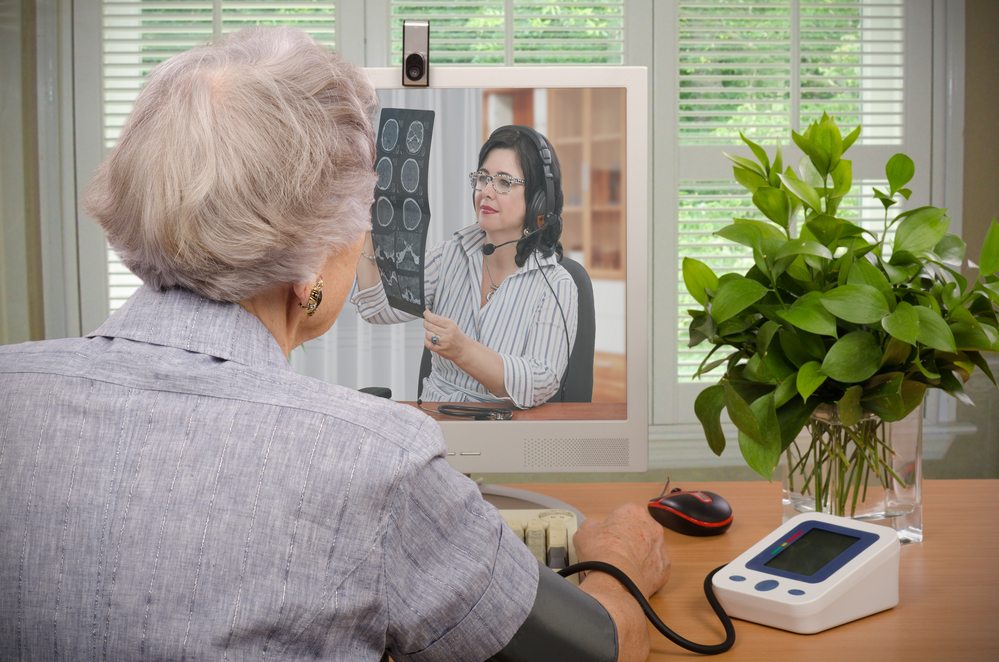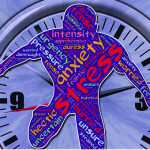It’s likely you or somebody close to you is already accessing something that comes under the classification of “mHealth”, even if you haven’t heard of the term. They could employ an app to keep tabs on their blood sugar levels, or they might make use of their health system’s app to view the blood test results that their physician requested. These are all examples of mHealth—or mobile health.
It is widely known that smart phones have seen a massive upsurge in use and acceptance over the past ten years or so. Due to the overwhelming amount of people that are constantly connected to technology, it is expected that mobile health applications are being used to help health care providers give the best service. It appears probable that mHealth apps will persist in increasing, just as patients’ anticipation for these services grows. A research study showed that seven out of ten patients are more likely to pick an organization which sends out alerts for follow-ups using email or text rather than one who does not. Are retailers and banks transforming as a result of mobile technology, and is healthcare following suit? In this piece, we will investigate precisely what mHealth is and examine its current role within the healthcare industry.
What is mHealth?
The use of mobile technology to access medical care and public health initiatives is known as mobile health. Mobile health applications generally come in the form of SMS text messaging or applications. And there are a lot of apps. As of 2017, a huge amount of mobile health apps – more than 318,000 – were listed on app stores with many more being added daily. Although there is no guarantee that each of these apps are of superior quality, it is evident that the creation of mobile health apps is a highly prioritized issue. These apps primary fall into two categories:
- Wellness apps that help users manage diet, lifestyle and exercise habits.
- Health condition management apps spanning diabetes, women’s health conditions, heart conditions and medication reminders.
Many of the applications available offer a means of preventive health care, such as assisting people in managing their weight, relieving stress, and adhering to drug treatments. Additionally, more and more applications are being designed which are tailored for certain diseases and health issues, which affords huge benefits for individuals that suffer from long-term illnesses.
How does mHealth fit into digital health?
The healthcare sector is increasingly incorporating technology, leaving you uncertain about the place of mHealth in this. What’s the difference between digital health and mHealth? Digital health encompasses any type of technology meant to improve the well-being of patients and mobile health is simply one subdivision of it.
MHealth is only one component of the digital health situation; however, it usually encompasses other facets of digital health. As an illustration, digital health encompasses a wide array of items, such as biometric cameras that can register a patient’s health indicators beyond the physician’s clinic, wearable gadgets to count steps and analyze rest, and telehealth for connecting physicians and individuals.
How is mHealth used by patients and providers?
Mobile health technology is having a positive effect on both the lives of those receiving care and the medical professionals providing it. Patients can look at their mHealth information independently or alongside their healthcare professionals. Wellness-based apps such as those designed for physical activity, sleep or food tracking are only accessible to the patient unless they expressly decide to share the information with their physician for consultation. Patients have the ability to access their health records and test results using electronic health record (EHR) applications, empowering them to do so outside of the doctor’s office. Other patient benefits of mHealth include:
- Tracking their own health data through mHealth apps and devices.
- Accessing their clinical records through mobile-enabled patient portal apps.
- The use of mHealth voice assistants and smart speakers for those unable to use keyboards.
- Sending messages or questions to their physician using a mobile app.
- Requesting prescription refills through their pharmacy’s mobile app.
- Scheduling and confirming appointments and also receiving appointment reminders.
Patients can now leverage mHealth with the added benefits of wearable technology, cellphones, and voice enabled services to make it much more effortless. Using mobile technology, people can gain access to health info in a quicker amount of time, and even get a diagnosis when they are dealing with minor health issues. This, as a result, can allow medical professionals to attend to a greater number of patients in a more effective manner.
For example, certain mobile health apps enable care providers to monitor patients’ key symptoms such as blood pressure, blood sugar level, or lung functioning, and an alert is sent if any of these figures are outside of what is considered normal. Clinics have recently developed the capability to offer virtual consultations, in which a patient can speak with a healthcare professional through a protected messaging system, which is suitable for posing fast queries and anxieties.
Having tools which can fit in pockets that help to regulate any illness enables people to develop useful habits which involve taking medication as instructed, and carrying out relevant measurements. Simon Greenberg of MedManage remarked that these methods can bolster people’s self-esteem while providing family members more practical ways to stand by the ones they care about.
Apart from interacting with patients, healthcare professionals can also make use of mHealth to collaborate with care teams while travelling, get hold of clinical data from far away locations, and stay connected with specialists in different parts of the world—henceforth potentially reducing the waiting period for patients.
Read More: New Technologies Shaking Up The Healthcare Industry
Other Options
Certain individuals might take advantage of online or telephone-based services for health-related services or advice. When you access a website or use a phone line to access healthcare services, you will be asked a number of questions. The provider or nurse practitioner can prescribe drugs. They may propose ways to care for oneself at home or additional medical attention.
While these services are handy, they have drawbacks:
- Treatment may not be coordinated with your regular provider.
- Important details from your medical history may not be considered.
- The computer-driven model used to make decisions may not be right for you if you have a complex medical history.
- The service doesn’t easily allow for you to make decisions with your provider about treatments.
Remote Monitoring
Various pieces of technology make it possible for your healthcare provider or medical team to monitor your health remotely. These technologies include:
- Web-based or mobile apps for uploading data to your provider or health care team. For example, if you have diabetes, you may upload food logs, blood sugar levels and drugs that a nurse checks.
- Devices that measure and wirelessly send data, such as blood pressure, blood sugar and oxygen levels.
- Wearable devices that automatically record and send data. For example, the devices may record data such as heart rate, blood sugar, how you walk, your posture, tremors, physical activity or your sleep.
- Home monitoring devices for older people or people with dementia that can find changes in daily activities such as falls.
- Devices that send notifications to remind you to do exercises or take drugs.
Providers Talking to Providers
Caregivers are able to utilize tech to provide patients with higher quality care. In a virtual consultation, primary care givers can request advice from expert specialists from other regions when they are uncertain of your diagnosis or remedy.
The primary care provider sends the specialist an overview that includes their examination notes, medical history, test results, X-rays, or images to look over. The specialist may answer by email. They may have a video call with you at your doctor’s clinic. They may also ask for a face-to-face meeting.
In certain circumstances, a nurse or other healthcare practitioner may implement technology in order to offer care from a medical center, outpatient facility, or mobile vehicle located in a remote area. It may be necessary to contact a professional or health practitioner at a medical facility to conduct a virtual consultation.
These online sessions may avert unnecessary referrals to a specialist that would need to be done in person. They could also reduce the amount of time that you have to wait to go and see a specialist. It may be possible to eliminate the necessity to go to a doctor who specializes in a certain field.
Patient Portal
The patient portal for your local medical clinic could be accessible through the internet. These portals provide a more secure option for connecting with your service provider as opposed to using email. A portal provides a safe online tool to do the following:
- Message your provider or a nurse.
- Ask for prescription refills.
- Review test results and summaries of earlier visits.
- Schedule visits or ask for appointment reminders for preventive care.
If the organization your service provider is part of is a big health care system, the portal could be a convenient method of communication involving any medical specialist you may have to consult.
Personal Health Apps
There have been numerous programs created for the purpose of aiding people in keeping their medical data consolidated and secure. These digital tools may help you:
- Store personal health information.
- Record vital signs.
- Calculate and track your calories.
- Schedule reminders for taking drugs.
- Record physical activity such as your daily step count.
Personal Health Records
You are in control of and responsible for the upkeep of a collection of data on your health with an electronic personal health record system. You can easily view a PHR app on any web-enabled device, including a PC, laptop, tablet, or phone. A PHR permits you to analyze your laboratory test outcomes, X-ray films and memos from your health care provider. Your provider may give permission for other providers to have this.
In a crisis, a patient’s medical history can give urgent personnel necessary details promptly. For instance, your medical information can be displayed, such as what medicines you take, any medical allergies you have, and the contact information of your doctor.
The Potential of Telehealth
Technology has the potential to enhance the standard of healthcare. There is potential for technology to simplify the access of health care for more people.
Telehealth may provide methods to increase the effectiveness and coordination of health care, while maintaining its availability in the local area. You can take a virtual tour from any location, whether it be from your home, your car, or anywhere else. You don’t have to take a trip in order to have a virtual meeting.
Telehealth can prove beneficial if you are ill or unable to travel, allowing you to remain in the comfort of your home. If you are located in an area that is distant from a medical facility, you may take advantage of telehealth. Many individuals have been able to remain socially distant from one another in their own living spaces whereas still getting the necessary care during the COVID-19 outbreak. And providers can diagnose and treat COVID-19 remotely.
Virtual visits can also give you the option to engage with professionals located outside of your area.
Virtual Visits
Some clinics may use telemedicine to offer remote care. For example, clinics may offer virtual visits. You can gain access to medical care, psychological counseling, and nursing services through virtual video calls or phone conversations.
Telehealth meetings can provide assistance for several diseases including migraine headaches, skin issues, diabetes, despondency, unease, sneezes, hacks, and the novel coronavirus. Telemedicine appointments provide patients with the opportunity to receive medical attention from a doctor without having to attend an office visit.
Prior to your trip, your medical professionals may supply you with documents or forms that you should complete electronically and submit back to them. They may also ensure that you have the necessary equipment. They will examine if you need to put in or upgrade any applications or programs. They can show you how to log in and participate in the virtual conversation for your appointment. Also, the medical staff can show how to utilize the microphone, camera and instant messaging. If necessary, enlist the assistance of a relative to help you configure the technological equipment you require.
You need a device that has internet capability such as a smartphone, tablet, or computer to be able to participate in the virtual tour. You can locate an intimate, tranquil, and secluded spot to take a seat during your stay. Your provider also meets from a private place.
Disadvantages of mHealth
Despite the advancements that have been made to mobile health technology in recent years, there remain issues related to both privacy and accuracy that have yet to be properly addressed by policy. The probability is that you aren’t diligently reading every single term of the privacy rules that appear when you log in to a fresh application—and who can criticize you for that? It can be difficult to process long and detailed user agreements and privacy policies, but they may contain key details regarding who is able to access your health information and what the data will be used for. Greenberg remarks that medical evidence and details are highly valuable and that mHealth is a major goal.
The long-term effects of a lack of privacy for app users can be damaging. Inappropriate individuals can give personal health information to insurance companies, which can then restrict people’s access to medical or life insurance depending on the health data that has been disclosed to the application. A research conducted by British Medical Journal conducted an analysis on 24 Android health apps, discovering that details such as medications and locations were being shared from the app providers to their parent companies, as well as additional third and fourth-party entities.3
Wellness apps are not subject to HIPAA privacy policy as it does not apply like it does for EHR and health system applications. It is in your hands to be tactical in what mHealth apps you select. Consider these tips when evaluating wellness apps:
- Read and reread privacy policies.
- Review the privacy settings on your mobile devices and inside the app.
- Be especially careful with free or ad-supported apps.
- Play it safe and don’t download if you’re not sure.









